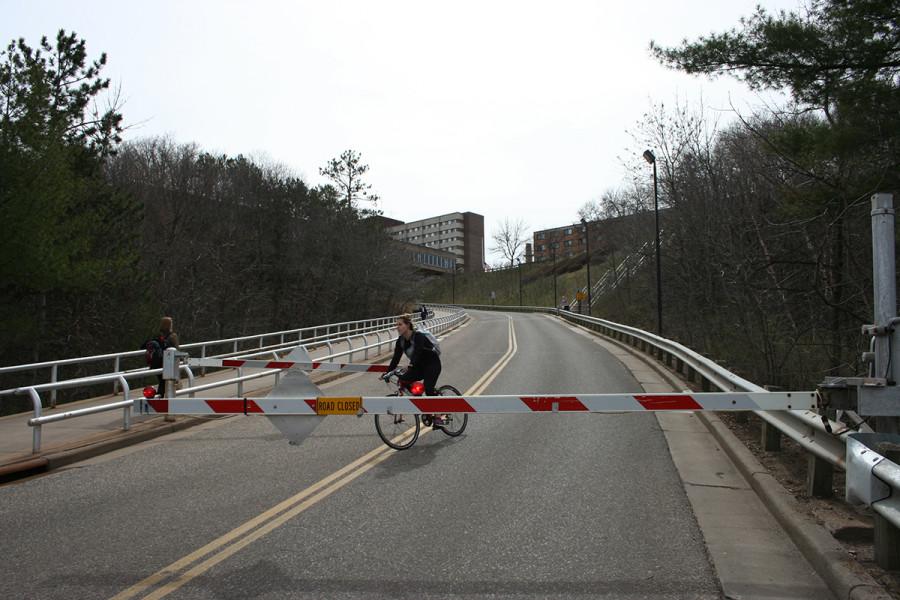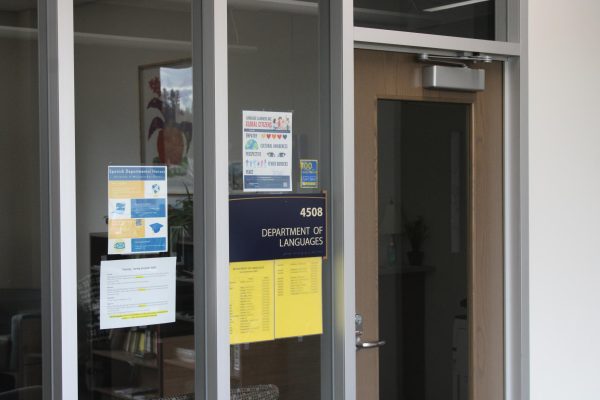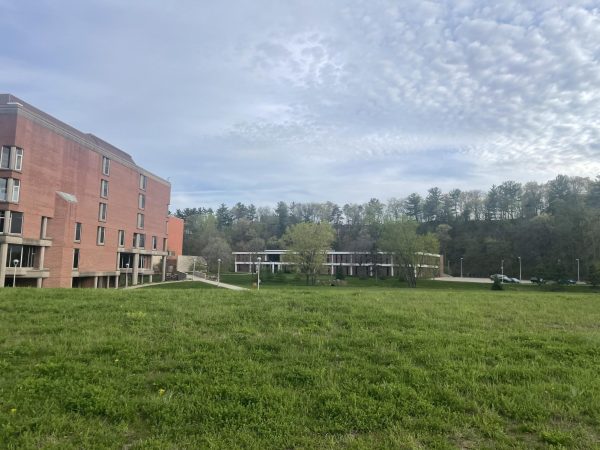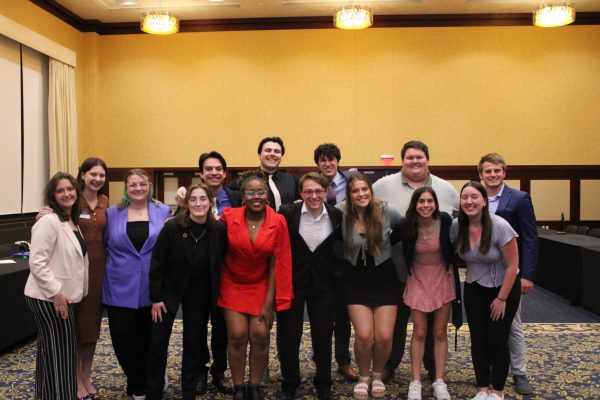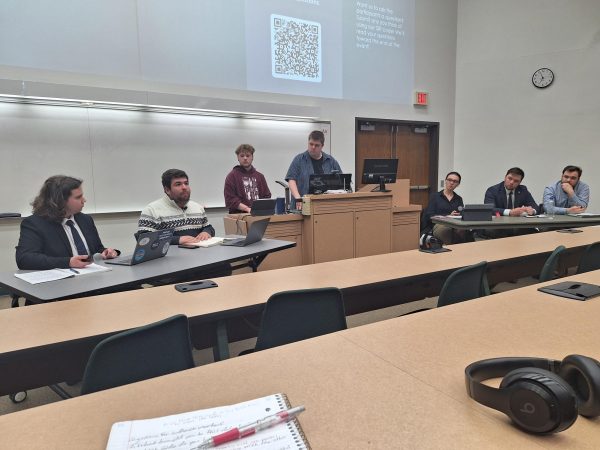Education and awareness the key to bike safety on Garfield Avenue hill
University officials still looking for ways to prevent crashes on Garfield Avenue hill
Photo by Ryan Alme
A PAINFUL CYCLE: Despite 16 students being injured on the campus hill while riding a bike since the 2010-11 school year, campus officials feel current gates are the safest option
April 29, 2015
He was afraid of being late to work.
Senior Tyler Haro took the same route every morning. He would ride his bike to the Housing and Sustainability Office in Towers Hall from his home on Water Street, always wearing a helmet. But on July 17, in the midst of his rush out the door, he left his head protection behind.
On his way home, he approached the top of the campus hill, like he had done plenty of times before. The gate at the bottom had just lifted for a working vehicle. Haro thought he had enough time to duck
“It came down faster than I expected,” Haro said.
Haro is one of 16 students since the 2010-11 school year to have fallen victim to the hill while riding a bike, according to University Police records.
Sergeant Chris Kirchman, however, said he has researched the safety and feels the gates are safer than their other options.
Those options included painting a warning on the street, road bumps and rumble strips. Kirchman said he called the state department of transportation, which reaffirmed having safety gates are the best route because other options could be more dangerous to bikers.
“Nowhere in the U.S. could we find a similar situation, which makes it difficult to find a solution,” he said. “Anything we looked at would have been just as dangerous as we have now.”
Before the gates were installed in 2009, Kirchman said most accidents occurred because of another vehicle. The reasoning behind the lower gate is to force people to slow down.
“Often, it has nothing to do with the gates,” he said. “Lack of attention, improperly working brakes, excessive speed and sometimes intoxication are all contributing factors that can lead to accidents.”
Others within the university feel there could be improvements, however. Chemistry Professor Bob Eierman, member of the newly formed Bike and Pedestrian Planning Team, said he understands there’s no great solution to the problem. But he doesn’t feel gates are the answer.
“I think we’ve got kind of a worst-case scenario set up right now,” Eierman said. “I’m not a huge fan of the gate; I argued against them when they came out.”
Eierman, who bikes the hill regularly, said he doesn’t see an immediate solution because it’d be hard to ban bikes completely from the incline.
Haro understands that is a tough problem to solve.
But even before his accident, he thought the university could do a better job of keeping the hill as safe as possible.
“I always wondered if they don’t want people driving up the hill, why didn’t they have a block-off at the top or at the bottom and not both?” Haro said. “I think at the top, it would be fine. But they put one at the bottom, and it seems more dangerous than anything.”
He understands it was him who drove the bike, and a lawsuit toward the university never crossed his mind. But he also said he didn’t receive a lot of support from the school and things can still be done to prevent injuries like the one he suffered.
Eierman said his group, which will meet formally for the first time on the last day of classes, is committed to improving the bike culture at Eau Claire, which he feels has improved immensely. He also said Garfield Avenue is expected to get renovations in the next couple of years, which could lessen the steepness at the bottom.
Kirchman said the best way to prevent more crashes is increasing awareness and making sure students are properly informed.
“It’s not for lack of trying; it’s the best solution we could find,” Kirchman said. “The best we can do is educate our students, especially in the fall when they first get here and make them aware of the dangers of biking down the hill.”

